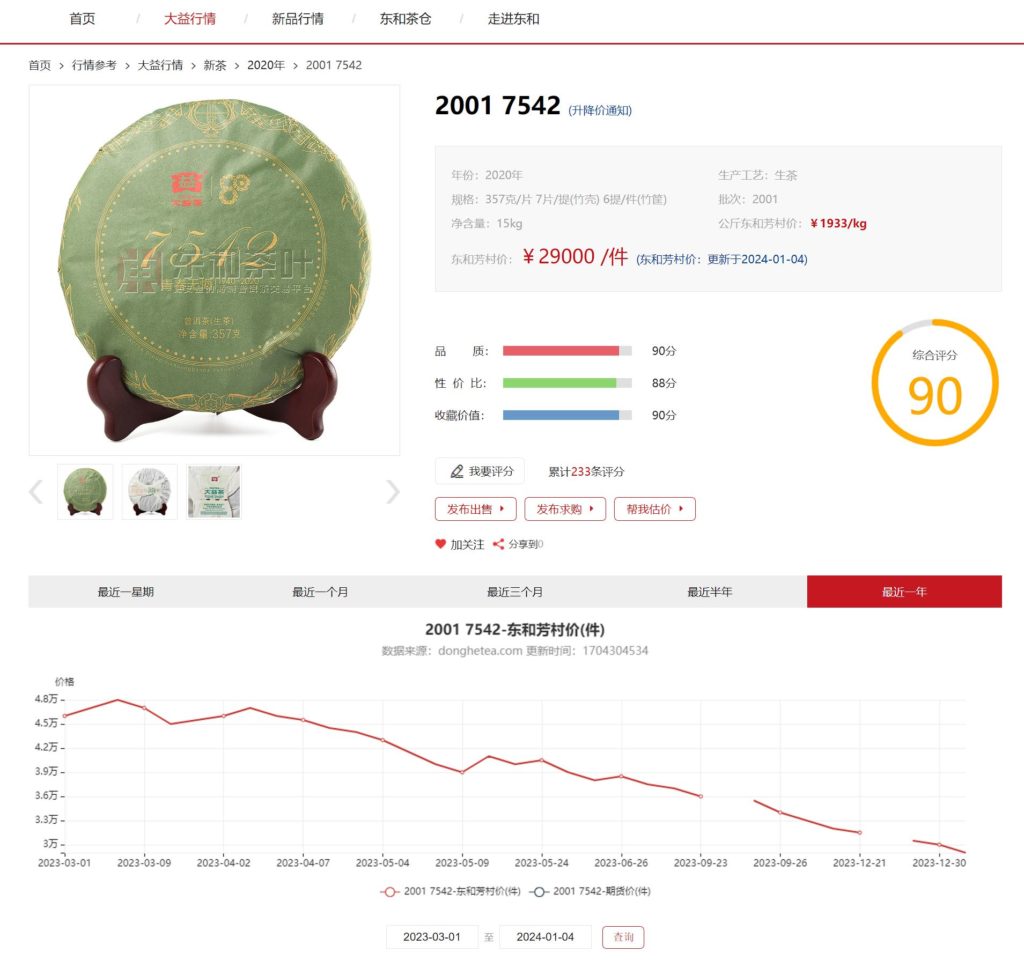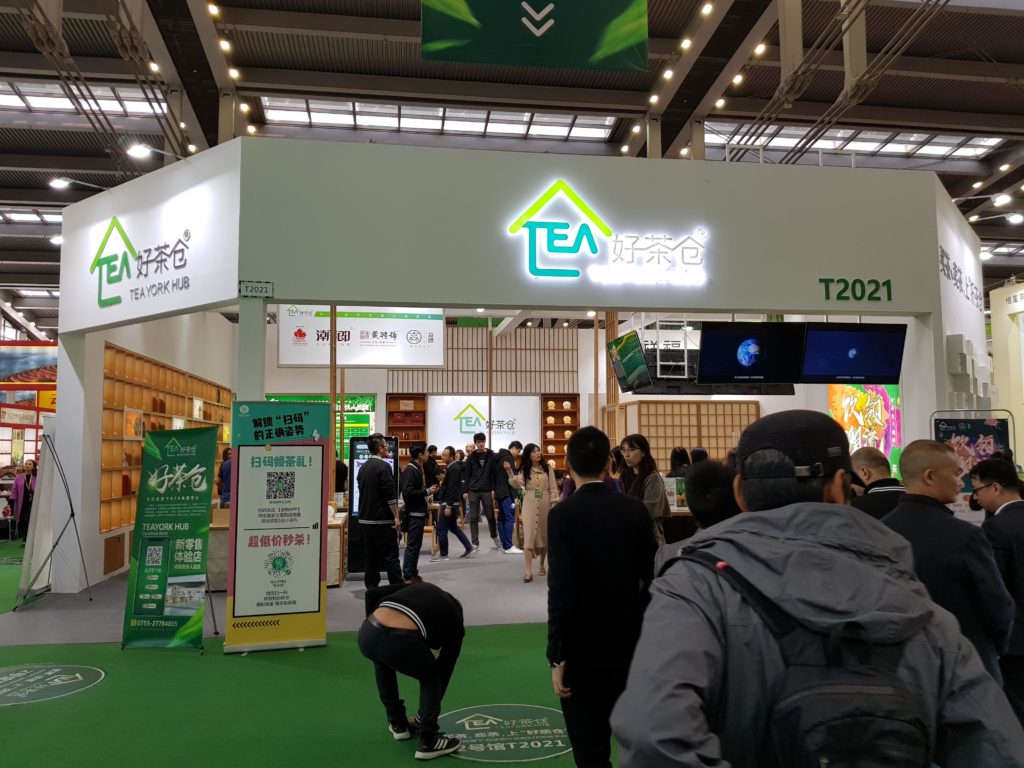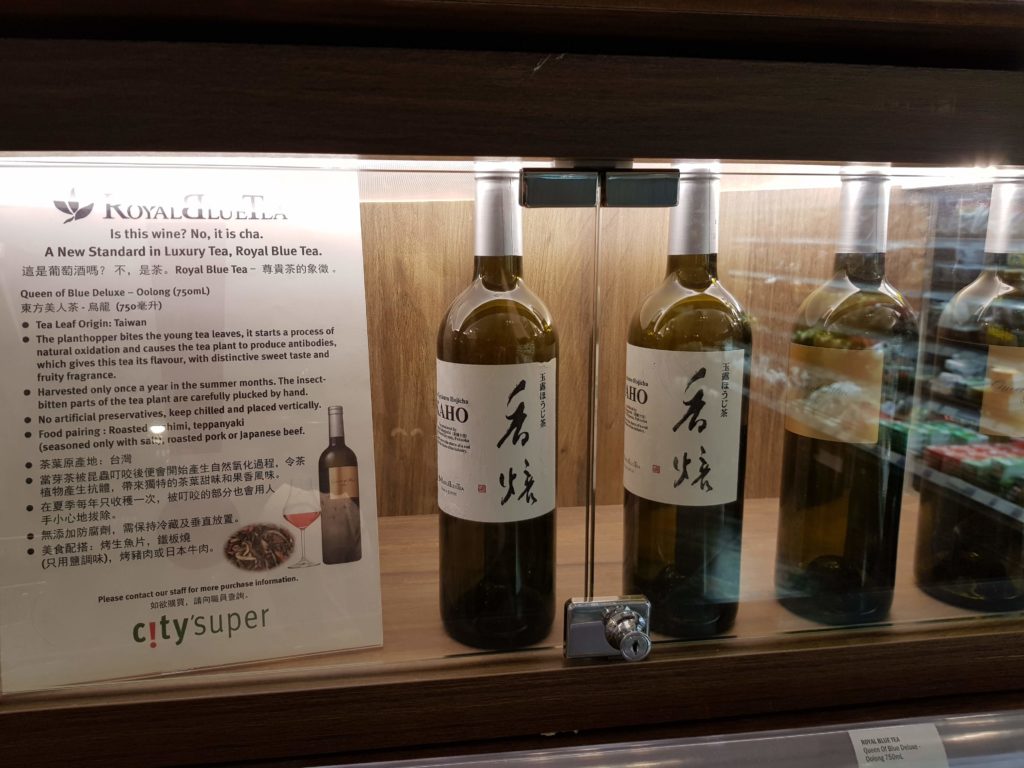When we say a tea is fake, what do we really mean? This is really an interesting epistemological problem because not only are we asking what “fake tea” means, but also how we can determine when something is fake. As is the case with a lot of things, there are varying shades of fakeness. I’ll try to go through them from most severe to least severe.
1. Bad tea as good. This is the worst of the worst – tea that is spoiled or been brewed or otherwise ruined being sold as good, new tea, so on so forth. The possibilities for this category are really endless, since there are a million ways to make something out of nothing. Among them is the cake I blogged about recently where it was a mix of raw and cooked puerh, and the raw leaves were completely tasteless and flavourless – probably leaves already brewed and then dried again to be pressed.
2. The selling of non-teas as tea. In the West these would be called tisane, but are then sold as teas. This happens more in China than anywhere else. I still remember way back when I was still in high school, I was in an organized group tour of Fujian province. We visited some places, including Wuyi mountains. We were taken to a tea shop, and of course we were served some teas. One of the last things they showed us was this thing the guy called “one leaf gan“. Gan, of course, is Chinese for the sweet sensation you get from drinking tea. The tea was sold as something special, etc etc, and how only a couple leaves in a cup will leave a nice gan taste in your mouth. Since this was a tour organized by the local government authorities, I thought it would be ok to buy some of this as a souvenir (i.e. not too likely to be cheated). Needless to say, I way overpaid for what I now know as kuding cha. Rookie mistake there.
There’s a lot of other types of things that get sold as teas even though they’re really not, with Yunnan being a particularly rich source of these alternative plants that people then harvest to make into tea in order to capitalize on the puerh craze. One that you might see more often is yabao. These are buds that look a little like tiny bamboo shoots, and is most often sold by puerh vendors as wild, ancient tea buds. In fact, quite often these aren’t even from camellia sinensis trees. These buds are quite cheap but are often upsold as rare, wild, etc, and with a price tag to match. They don’t age, so buying them for aging is really a bad idea. They are also very cold in nature in Chinese medicine terms, and can cause stomach problems for some people. You can even find them in cake forms, like this and this for example on Taobao. Similarly, you might see “teas” like camellia taliensis being sold as puerh. My suggestion is avoid all these pseudo-teas unless you explicitly want them.
3. Obscuring origins. This is where things get tricky. When you think about it, nothing is stopping a vendor from heading down to the nearest Chinatown supermarket, buy up a bunch of tins of tea that cost $5 each, empty them, and repack them as premium teas and reselling them to you at 4x the markup. If you’re buying tea at $20 an ounce, you’re probably not buying $5 cans of tea from Chinatown, so you would be none-the-wiser. There’s also the rather common practice of intentionally selling something as something else. For example, in Nantou county the only place you can probably name as a tea producing area is probably Dongding, which is famous for its oolong. You have probably never heard of Mingjian, which actually produces a lot more tea but is on lower elevation with flat land and mostly machine-harvested. However, better teas from the Mingjian area is often, if not always, sold as Dongding. Try go out and find a Mingjian tea – you won’t find many vendors selling that.
The reason is of course money. Dongding gets a better price. Unless you know the areas well and the teas well, you probably can’t tell the difference if you just drink them. Because tea has no inherent labels, anything can be sold as anything else. For things that are obviously far apart, it’s hard to do, but for things that are closer together – location, style, etc, it’s not hard to do at all. Witness all the uproar in Taiwan about imported oolongs from Vietnam, for example, or all the maocha being imported to places like Lao Banzhang which are then sold to outsiders buying them to press into their LBZ cakes when in fact the teas are not LBZ at all. Because there is so much variation in tea from cup to cup, it’s very easy to obscure this sort of thing and sell one tea as A when it’s in fact from B. Unless the person doing the buying knows the area intimately well, and in the case of puerh, follows the tea their entire way from tree to cake, it’s very easy to get sold something completely different.
4. Inflating statistics. This is sort of similar to the previous one, but in things like the age of the tea, the age of the tree that produced the tea, that sort of thing. For example – how do you determine age on an aged oolong? There are ways – the shape of the leaves, the taste, the colour, but those things are subtle, and unless you’ve seen and drunk a lot of aged oolongs, it’s not going to be easy to judge. If a vendor says their aged oolong is 30 years old, what do you do with that information? I can tell you right now that it’s not hard finding aged oolongs that are 20+ years old, but it’s a lot harder to find nice aged oolongs 30+ years old. The price difference is pretty significant, but so is the taste. Someone selling a tea to you claiming it’s over 30 years old is going to be charging you a lot more money than it would be at 20+ but unless you can objectively judge it yourself, the room for, well, inflated claims are high. I’ve had some aged oolong from Taiwan that are almost certainly faked – but done quite well so that it’s very hard to spot. If I hadn’t had hundreds of aged oolongs, I would’ve fallen for them too.
It’s even worse with age of trees, and we’ve seen plenty of controversies in the past few years with vendors making somewhat outrageous claims with the age of tea trees. The much harder to verify claims is when someone moves up one age bracket – going from, say, 100 years old trees to 2-300 years old. Or having teas that are actually mixed being sold as pure old tree material. Again, the room for error is quite large here.
In a funny way, pressed puerh tea is probably the most transparent in the market for this sort of thing. Especially for older teas, there’s a pretty good record of documentation for a lot of productions, and this is information freely available on the web. There’s good agreement on what different era teas look like and the type of packaging they come with. Loose leaf tea is a lot harder to judge as a result, but aged puerh is relatively easy to spot fakes for in the eyes of the experienced. So even though aged puerh is one of the most heavily faked areas, because of the promise of money, it is also where one could, if one does enough studying, relatively safely navigate the waters. Staring at a bag of loose oolong and trying to figure out how much it’s worth is actually quite a bit more difficult.
5. Finally we’ve got stories. I think it’s safe to say that there are now two kinds of online vendors in the West. The first are the no-story vendors. You have people like White2Tea who is now eschewing any kind of story-telling. He might as well just give his teas Greek letters as names and just put “tea” in product description, since tasting notes are generally worthless anyway given the infinite variation of water, brewing parameters, and teaware producing different kinds of tastes. You have people like Yunnan Sourcing who just describe the item without much fanfare. I tend to prefer this style of tea selling – you’re, hopefully, buying just the tea.
Then you have story-tellers. Vendors in this category tend to focus on personalities – either the vendor him/herself, or the people who supposedly are making the tea they are selling. The former type tend to be marketed as some kind of tea-master, tea-monk, or whatever pseudo-religious type of personality you prefer. You see this in Asia and you see this in the West as well. All I can say about them is this – it’s always a healthy idea to shop around, because the truths that one person has discovered about tea cannot be the only truth. All too often, I see people who have gone down the rabbit hole and follow their master into some pretty dubious territory of paying top dollar for inferior tea and teaware. When you have identified one “master” to follow and believe every word they say about tea, this sort of thing tends to happen. There are always ones who then “wake up” from this slumber and discover that they’ve been conned, but usually that’s only after some time and a lot of money spent. I certainly think I spent more money than I should have at the Best Tea House, although thankfully I never bought that much tea from them either owing to my discovery of cheaper, better sources relatively quickly, and not spending that much time in Hong Kong in my formative years of tea drinking.
The type of vendor that focus on the tea farmers I only really see in the West. I think there’s a certain exoticism that comes attached to this marketing ploy, and the consumer is paying for what they perceive as authenticity. If I buy from this vendor, then I’m pretty much buying direct from the farmer who made this tea I’m drinking with their bare hands! Or so the thinking goes. There’s definitely a certain attractiveness to this idea. I personally like visiting tea farms as well, if for nothing else than to talk to the farmers and see what they’re up to. They are, generally speaking, nice people (but of course, I’m also always a potential customer). The problem is, most of these farmers are also making teas that are, well, mediocre. I can’t tell you how many forgettable visits I’ve had of farmers whose teas are just “meh,” or worse. Just because a tea is direct from some farmer doesn’t mean it’s good. Traditionally, nobody bought direct from farmers. In the old days teashops in major cities would buy from middlemen who went to the mountains to purchase maocha from the farmers. These shops would then blend, process, and package the tea. and then resold to the end consumer. The processing often includes additional roasting and that sort of thing. There’s nothing inherently “authentic” about buying direct from the farm – if anything it’s a pretty recent phenomenon from the past few decades as transportation to a lot of tea farming areas improved so that any random person can drive up and visit.
There are also those pictures – oh those lovely pictures of tea plants in neat rows with mountains in the back. What they might not show you is how the person taking the photo might be standing on the ditch next to the highway that’s 10ft behind them, or the undergrowth that are all yellow because they just sprayed herbicide on them last week, or other similar things. Farmers are also vendors, and quite often some farmers will also carry teas made by others for one reason or another. Farmers, I hate to say, also tell lies to sell their teas, and these lies are then retold to the Western consumer in “authentic” form through instragram-filtered photos and neat little videos. Are these fakes? Strictly speaking, no. But it’s important to remember that what you’re buying and drinking is the tea. There are genuine farmers doing interesting things with their teas, but those are pretty rare. Most of the time, the teas are replaceable and paying extra for the story you’re told is really nothing but smoke-and-mirrors.
Someone pointed out to me that much of this marketing of farmers is quite similar to what’s been going on for far longer in the wine industry. There’s certainly a bit of parallel there, but also important differences. The first is that wineries tend not to sell other people’s wines, for obvious reasons. It’s also not that easy (nor profitable) to fake newly produced wines from other places – unless it’s a Romanee Conti or something equally exalted. Appellation control is nonexistent for tea. So…. yes, there are similarities, but also important differences. What works for the wine industry may not be such a great idea for the tea industry, because the nature of the products are inherently different. Maybe we will see things evolve from here that works better for tea, but a farmer-focused approach is, I think, quite misguided as currently done.
The advice I have for newcomers is the same as always – drink around. Talk to people – different kinds of people. Don’t get too attached to one vendor. Compare and be critical. The internet makes all this possible. Use it.










Yeah whisky prices have been leaking too, as well as luxury watches. I wrote a post maybe a decade ago…